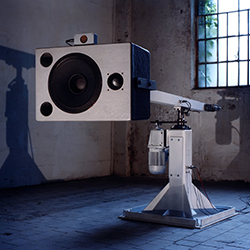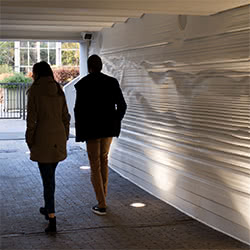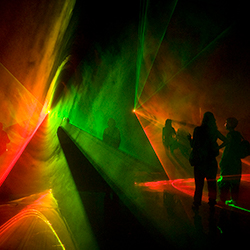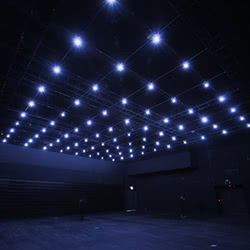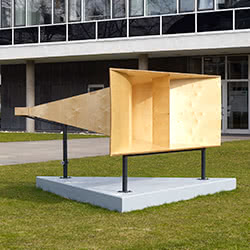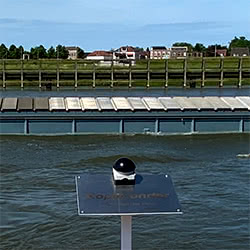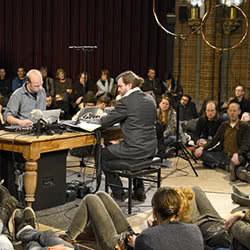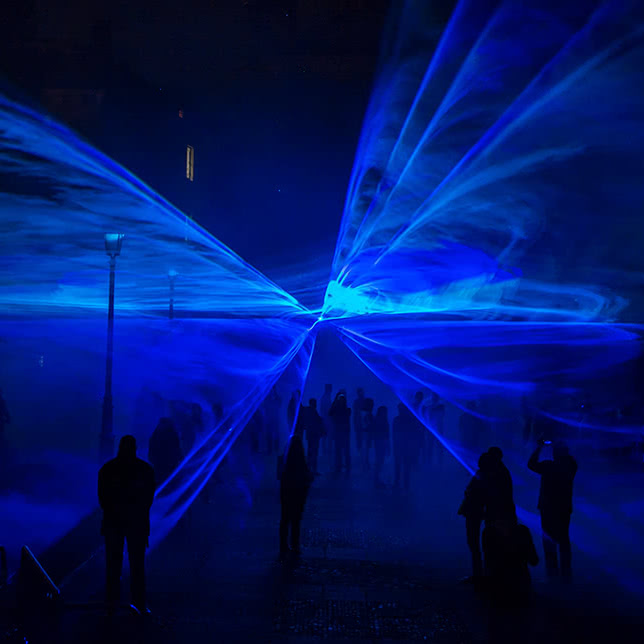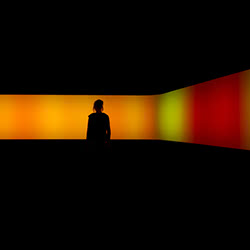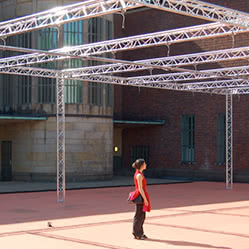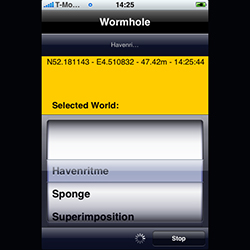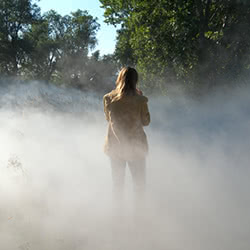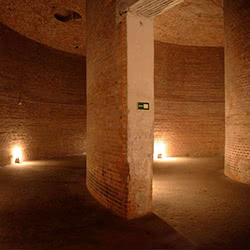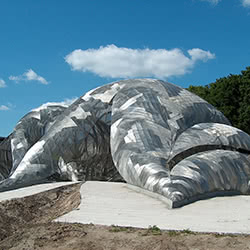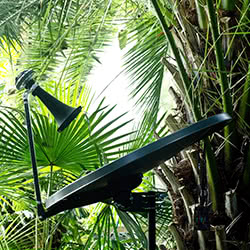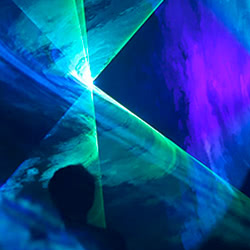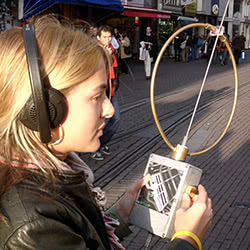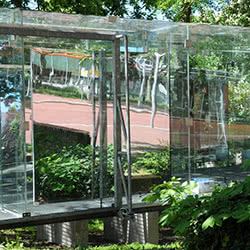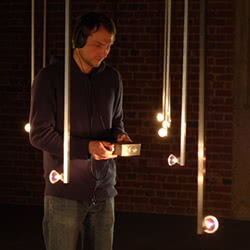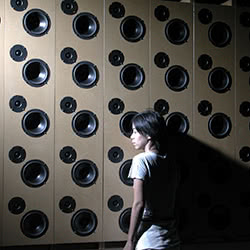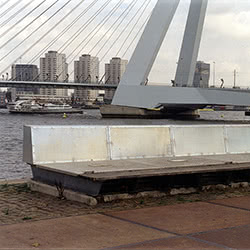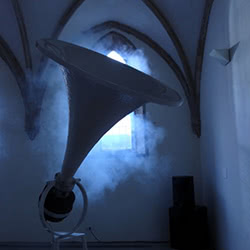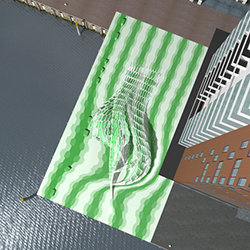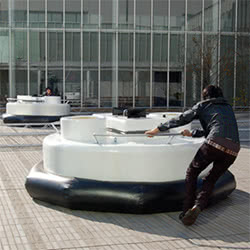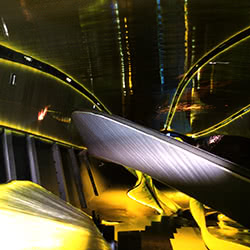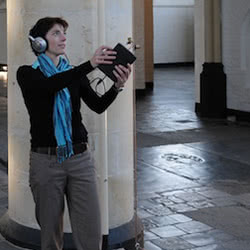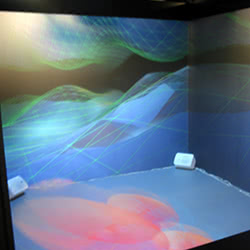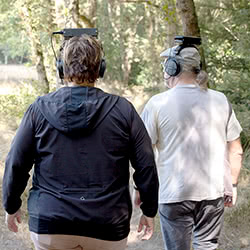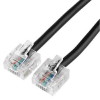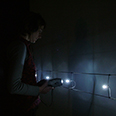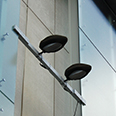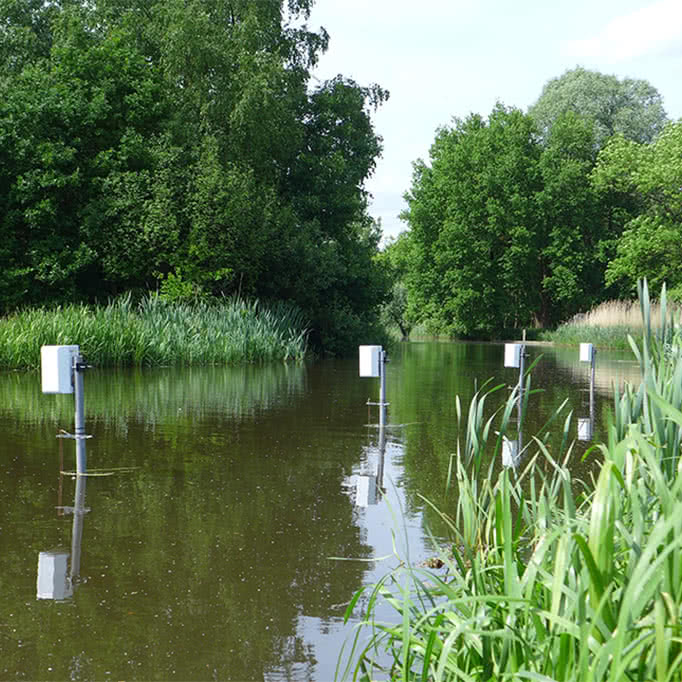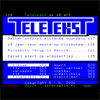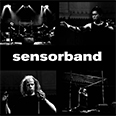
We are hardly aware of the fact that almost all single sounds consist of a multitude of elementary vibrations (also known as overtones, harmonics or partials). Together these vibrations determine the timbre of the sound. When we, for example, analyze the sound of our voice we'll notice that each consonant sound consists of many many overtones. We perceive them together as one specific sound with a specific timbral color and texture. Just like molecules are formed by specific combinations of atoms, sounds are formed by specific combinations of elementary vibrations (overtones / partials).
The point of departure for Spectral Diffractions is the question what happens if you take a sound apart in its individual elementary vibrations and distribute these individual tones in space (by means of many loudspeakers). Since the recombination of the overtones happens now in the physical space the perception of the sounds becomes a spatial phenomenon (the overtones are structured in space).
Once we have separated a sound in its individual overtones we can go a step further. We can approach the overtones as independent sounds, not anymore related to its original sound. Each overtone becomes autonomous and has its own behavior in frequency, amplitude and spatial position. A metaphor for this is blowing against the seeds of a dandelion flower and releasing them individually in space. The only difference is that in Spectral Diffractions the process can go in both directions: sounds can be separated in individual (autonomous) overtones and the overtones can (later on) form relations that correspond to specific sounds. Back to the chemical metaphor: molecules can be separated in individual atoms and atoms can be grouped to form molecules.
When we summarize this approach we can distinguish three different distinct states (and the
transformations in between):
- a sound that is not separated in its individual overtones
- a sound separated in its individual overtones. This leads to the possibility to distribute the
overtones in space and give them a specific spatial behavior
- autonomous overtones with their individual behavior in frequency, amplitude and spatial
position
Spectral Diffractions makes use of voice sounds as compositional source material. The composition is neither about words nor about singing but simply about the different timbral and textural possibilities of the human voice. The individual sounds will be zoomed into, stretched, compressed and 'exploded' in space. The described system creates the possibility for different abstractions of the human voice. It provides possible continua between acoustic sounds and sonic abstractions both in a timbral and spatial way.
The Mies van der Rohe Pavilion in Barcelona is on the one hand very minimalistic in its architecture and on the other hand full of detail because of the use of natural stone. The pavilion reveals itself to the visitor by choosing and changing position and perspective. The clear shape of the pavilion form the point of departure for a multi speaker setup. The speakers follow the architectural structures while being hardly visible. The sound fields of the speakers overlap in space and get partially reflected by walls and floor. While the pavilion itself is static the sounds will be dynamically following the architectural grammar of the pavilion, resulting in perceptual relations between the pavilion and the composition. Just like the pavilion needs to be explored the sound composition also requires the visitors to change position and perspective. While the sound is from a perceptual point of view equally present as the pavilion it nevertheless has an ephemeral quality that opposes the solid nature of the pavilion.
The Music Technology Group from the Universitat Pompeu Fabra in Barcelona is internationally renown for its highly specialized research into sound analysis and sound synthesis. It is therefore a fantastic opportunity to collaborate on Spectral Diffractions. For the university it's an opportunity to work in a more fundamental, less academic and/or less applied context.
We're used to speak about the spectrum of a light source. The spectrum describes the combination of the individual colors (frequency components) present in the light. The same term is used in sound. The sound spectrum is an analysis of a sound in its individual overtones. In Spectral Diffractions sound spectra get diffracted is space.
| composition and concept: | Edwin van der Heide |
| install: | Edwin van der Heide with Jordi Salvadó, Lluis Nacenta and Victor Sanches |
| curator and project director: | Lluis Nacenta |
| sound analysis and resynthesis software: | Jordi Janer and Antonio Sa Pinto - Music Technology Group, Universitat Pompeu Fabra |
| support: | Sonar Festival, Mies van der Rohe Foundation, the Music Technology Group - Universitat Pompeu Fabra, Mondriaan Foundation and the Dutch Embassy in Spain |
| keywords: | sound art, new media art, generative art, music, composition, sonic architecture, public space, analysis, resynthesis, spectrum, fft, installation, immersive environment, computer music, technology, composer, artist, exhibition, multi-channel audio, spatial sound, Mies van der Rohe Pavilion |







| composition and concept: | Edwin van der Heide |
| install: | Edwin van der Heide with Jordi Salvadó, Lluis Nacenta and Victor Sanches |
| curator and project director: | Lluis Nacenta |
| sound analysis and resynthesis software: | Jordi Janer and Antonio Sa Pinto - Music Technology Group, Universitat Pompeu Fabra |
| support: | Sonar Festival, Mies van der Rohe Foundation, the Music Technology Group - Universitat Pompeu Fabra, Mondriaan Foundation and the Dutch Embassy in Spain |
| keywords: | sound art, new media art, generative art, music, composition, sonic architecture, public space, analysis, resynthesis, spectrum, fft, installation, immersive environment, computer music, technology, composer, artist, exhibition, multi-channel audio, spatial sound, Mies van der Rohe Pavilion |
